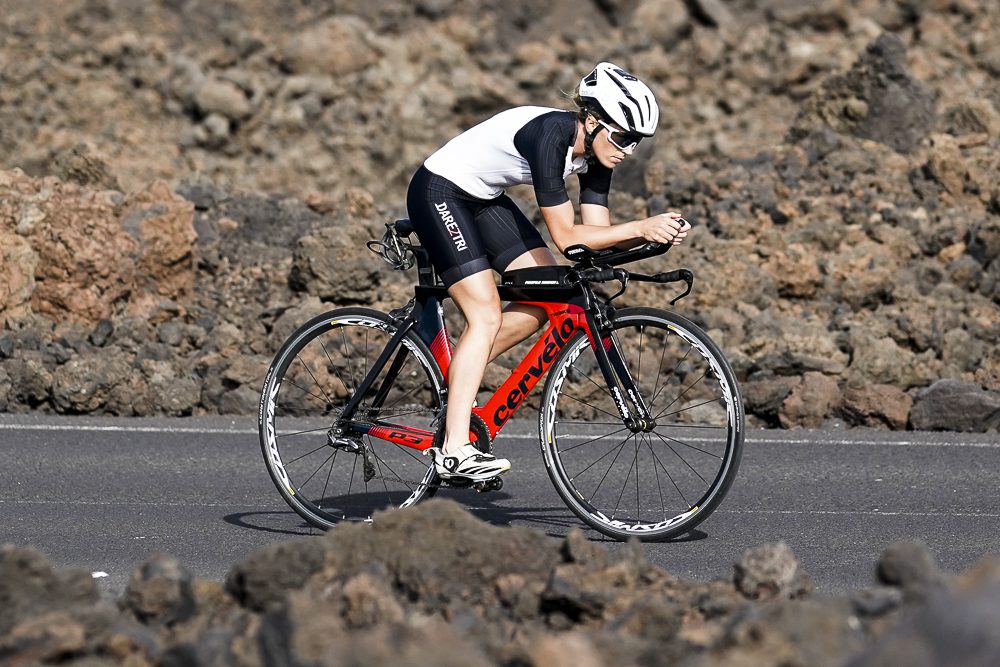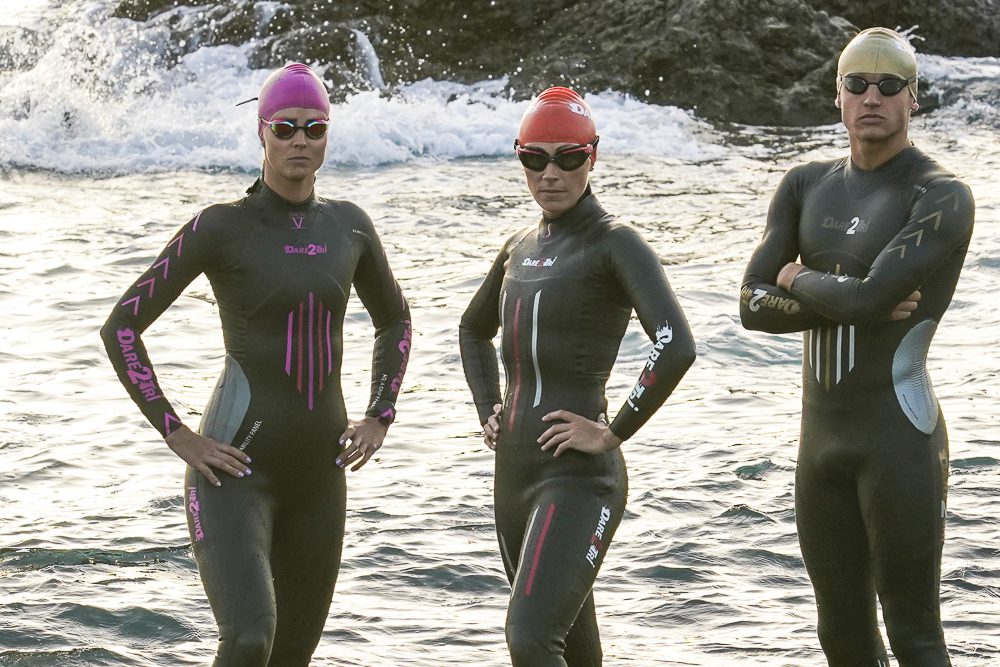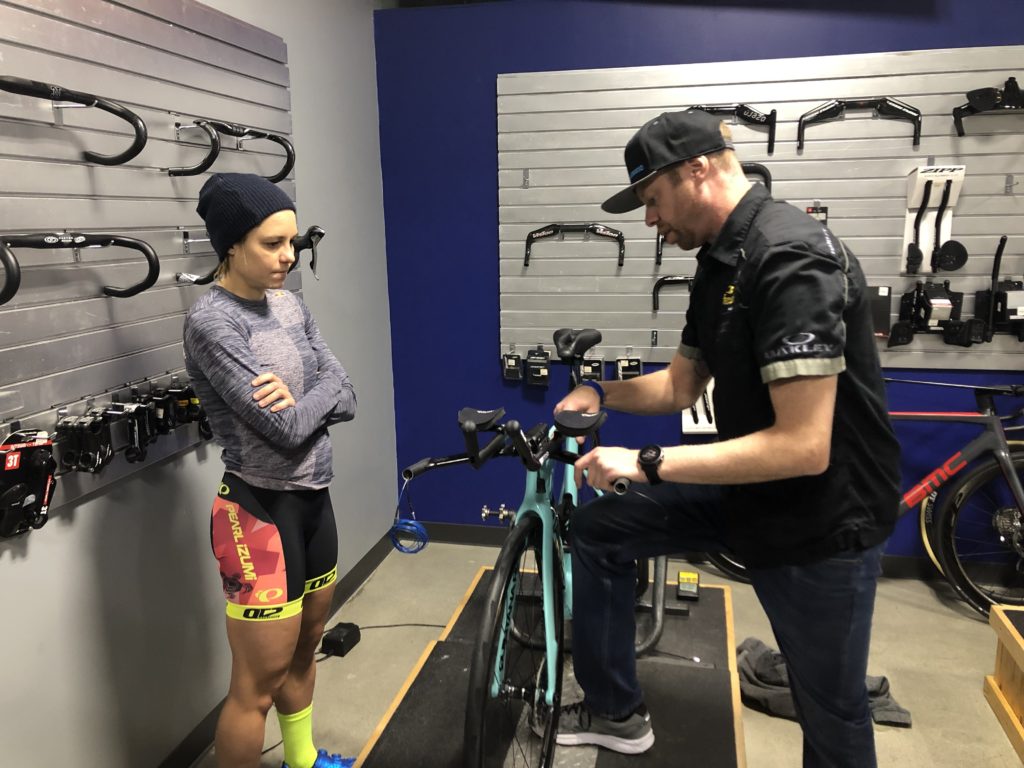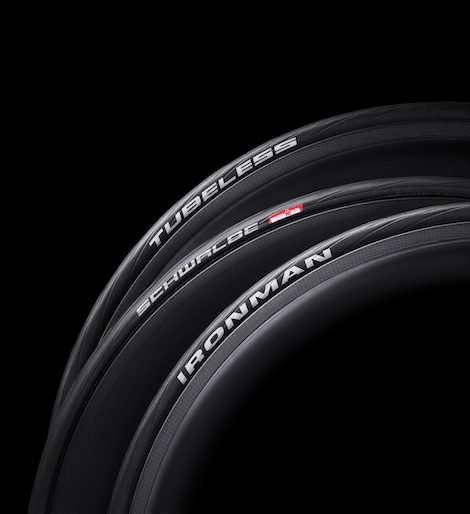Watts vs Dollars: Which upgrades give you the most bang for the buck?
What do you upgrade first to give you the most performance gain out of every dollar?
 Photo by:
Kevin Mackinnon
Photo by:
Kevin Mackinnon
Salivating over the coolest aero gear is as much a part of triathlon as obsessing over race-day weather and carefully planning your 2022 race calendar. A certain way to blow your budget is to buy all the upgrades at once, so most of us settle for adding a key piece of gear or two each year, slowing building our arsenal of tri-related doodads and carbon-fiber whatnots.
Let’s say you’ve got the basics to train and compete, but you’re itching to get some tools to make you faster. What do you upgrade first to give you the most performance gain out of every dollar?
Budget: $300: Aero Helmet vs. Tri Suit vs. Bike Fit
Best Bang for the Buck: Bike Fit
All three of these potential speed savers can be found in the same price range, but it’s hard to find any expert who would put the helmet or tri suit ahead of a quality bike fit.
Dean Phillips, elite master’s cyclist, coach, and owner of Fit Werks studio agrees: “I would absolutely rank a bike fitting from a reputable fitter in your area as the most important upgrade which can typically be done in the $300 range. A bike fitting may amount to more time savings than all the other upgrades combined and can also result in a more powerful and comfortable position on the bike.”
Worried about spending $300 on a bike fit for a bike you might upgrade in a year or two? It’s still money well spent. A fit will optimize your position on your current rig, making you more aerodynamic and more comfortable, but it will also give you terrific insight into what brands and models might work well for you in the future. The measurements taken at your bike fitting are going to be “your numbers” for years, so a coach or shop can help you match those specifications to bikes in your price range.
A quality bike fit goes well beyond adjusting the saddle height. Look for:
- 90 minutes to 2.5 hours with a fitter. A quality fitter will take their time with you, with no distractions.
- A thorough interview. Your fitter will ask about the events you do (or want to do), existing pain or discomfort, nagging injuries and more.
- An assessment of your body. We all favor one side or the other and have asymmetrical body parts. A fitter takes that into account.
- Time on a fit “jig.” Most top fitters use a “jig” – a contraction that barely looks like a bike, but is set up with infinitely adjustable geometry to dial-in your position.
- Follow–ups. The best fitters include a follow-up to see how you’re doing on the fit, including tweaking adjustments to solve any remaining issues.
Find a fit studio or bike fitter by asking around. Word of mouth from other local triathletes and cyclists is the best way to find a good match for your needs.
Runners Up:
Aero Helmet
If you already have a good fitting bike, consider a race helmet for your $300. Phillips says that he’s seen 10 to 20 watt savings (which means more speed for less effort) just by switching to an aero helmet. However, Clint Lien, assistant coach for the National Performance Centre, adds that an aero helmet will only make a difference if you’re riding at speeds over 32 kph, so slower riders might put that money elsewhere.
Tri Suit
If you’ve been making do with a two-piece kit, you’re in for a surprise. One-piece suits, for most people, are far more comfortable, but they can also be faster. “A good fitting and comfortable triathlon race suit that covers the upper arms and uses top quality material and seam placement will often save 10 to 20 watts compared to traditional two-piece triathlon clothing,” adds Phillips.

Budget: $800: Race wheels vs. Power meter vs. Wetsuit
Best bang for the buck: Wetsuit
For your first triathlons, you may have borrowed a wetsuit, purchased a bargain-basement sleeveless model, or just gone without. But if you’re looking for the best bang for the buck in this $800 range, investing in a full-sleeve wetsuit is a choice you won’t regret. Clint Lien explains that a good wetsuit “will directly impact a triathlete in a more positive open-water experience and will usually give you faster swim times immediately.” Depending on which study you read, and on the experience of the swimmer, a wetsuit can immediately improve swim times by two minutes or more over 1,500 meters.
Wetsuits give you extra buoyancy in your trunk and legs, which can immediately benefit swimmers whose legs tend to sink (probably most of us). Sleeved wetsuits give your whole arm more friction against the water, giving you a more effective “paddle.” And wetsuits give mental comfort too, handy for those who fear brushing up against something in the water, and for those who appreciate the peace of mind of feeling more buoyant.
What to look for in a wetsuit:
- Full sleeves. A sleeved wetsuit, is always faster.
- Fit. Getting the right size is key, as is finding a wetsuit that’s snug, but not too tight, around the neck, and one that’s got enough material in the shoulder area to allow for your stroke, but without any bagginess.
- Swim-specific. It might be tempting to go for a cheaper wetsuit meant for scuba or surfing, but these types are very different from a tri-specific wetsuit.
Runners Up
Carbon Race Wheels
Race wheels look sexy, there’s no doubt about it. But the reality is that for most age-group triathletes, upgrading to carbon race wheels just won’t gain you much speed versus the expense—we’re talking seconds over an Olympic-distance bike course. One option is to rent wheels specifically for a race if you want to try them out. That will run you $150 or so. With the fanciest wheels running well into the $2,000s, renting is an excellent option for the wheel-curious, or for those who just want sexy race photos.
Power Meter
A power meter is an electronic tool that measures your pedaling effort by a bunch of metrics. It can give you an idea of your overall bike fitness and allow you to track improvements. Power meters generally come as pedals or cranks. Writes Clint Lien: “Once an athlete has put some time into the sport, a power meter can be a wonderful tool to monitor progress,” but for someone new to the sport, “a simple Garmin will be much more functional.”
Cheap Thrills Under $100
You don’t have to spend hundreds to gain a little more speed and comfort – and let’s face it, anything that makes you race more comfortably can also be a performance win.
Race tires ($100). “Too often I see fast carbon aero wheels that have bomb-proof, but slow, tires mounted [on them] that can easily offset the benefit of the aero wheels.” Even if you aren’t riding a pricey aero wheelset, you can gain speed by trading the Gatorskins for a faster-rolling set of race tires.
Clip–on aerobars ($100). If a tri bike isn’t in your budget, you can give your roadie more tri functionality by adding a set of accessory aerobars. By getting yourself in a more aerodynamic position, you can save upwards of 90 seconds on a 40 km course.
Tinted goggles ($20). You probably use clear goggles in the pool, but in open water, tinted goggles make a world of difference. They help with sun glare and allow you to spot buoys much more easily. And straighter swimming is faster swimming.


